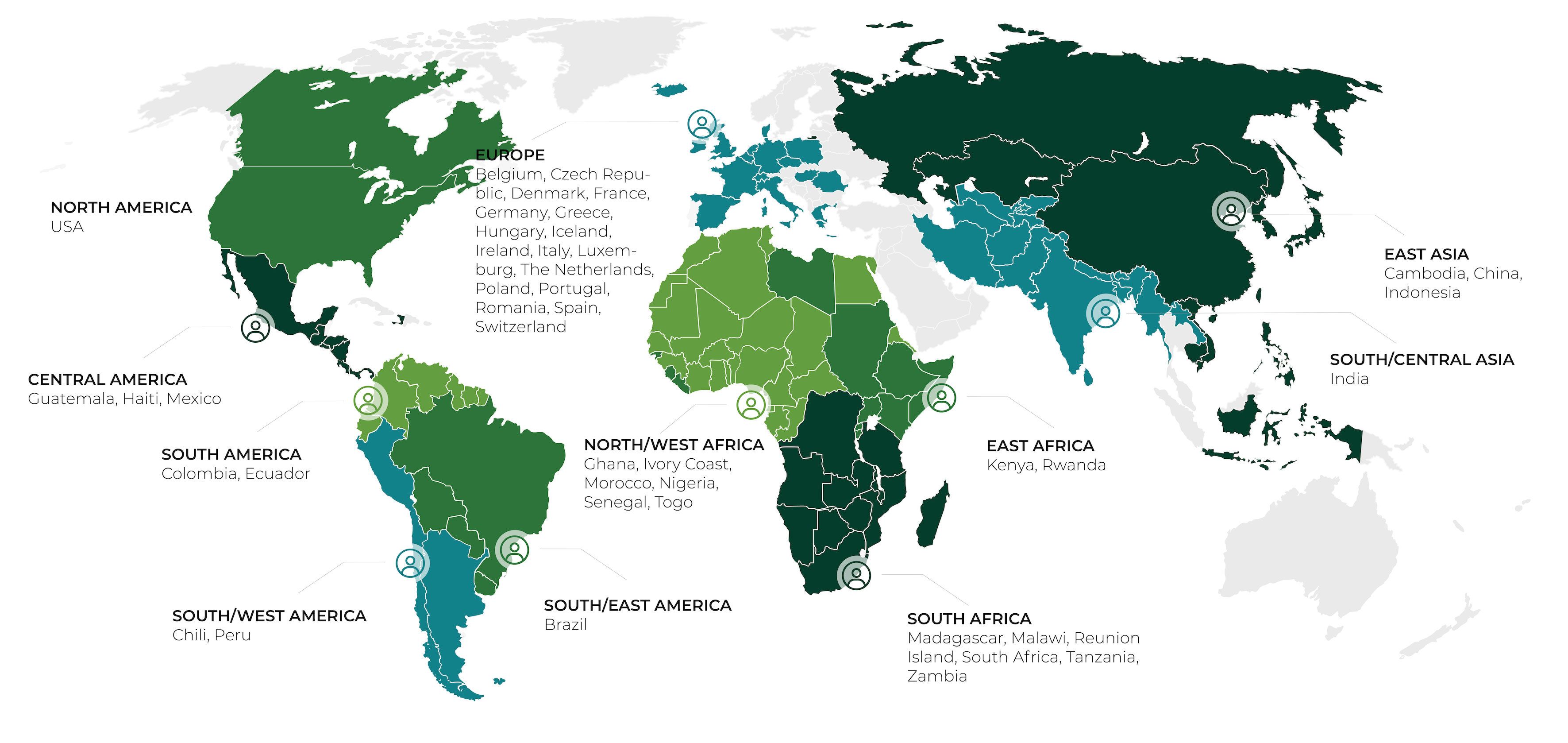Regenerating the Earth’s ecosystems around the world
Preserving natural ecosystems’ health: a challenge for humankind.
Humankind is totally dependent on the health of natural ecosystems. In addition to their tremendous ability to sequester carbon, the number one natural solution for combatting global warming, healthy natural ecosystems provide humankind with many essential benefits: They contribute to economic resources, food supplies, water conservation, territorial preservation, combatting drought, and health and well-being, just to name a few. They are also the primary source of raw materials that our economy relies on.
However, these precious ecosystems are under increasing pressure from deforestation, forest degradation, intensive production patterns and the effects of climate change, with ripple effects on local populations, biodiversity, climate and raw material shortages that jeopardize the business models of many companies.
While it is obvious that preservation is necessary, planting, reforesting, and regenerating ecosystems, as widely and as reasonably as possible, is not an option, either.
What does it mean to regenerate ecosystems?
The challenge is not to limit ourselves to restoration but to begin a process of regenerating ecosystems to ensure their stability over time while also ensuring their resilience to climate change.
An ecosystem’s regenerative character depends on the relationships between its different features. Restoring and optimizing its constitutive features equates to ensuring that it is resilient and therefore sustainable.
Our work guarantees that each project we design and/or develop creates positive impacts for the climate, biodiversity, soils and communities, in order to ensure its regenerative nature.
The ABCs of our Action
Local stakeholders are the foundation of our model. Our goal is not to buy land or implement our projects ourselves, but rather to promote the implementation of regenerative ecosystems by optimizing project design, deployment on the ground, monitoring and long-term impact measurement.
Our action is guided by four fundamental principles.
International action
Reforest’Action designs and develops diverse types of projects worldwide, because the world is at stake and, depending on the geographic region, the benefits of reforestation are compounding. This expanded action is now possible thanks to an international network developed over more than 10 years.

Our team of Project Officers, deployed locally, strengthens our proximity with project leaders, both in the feasibility and due diligence phases and in the audit and project monitoring phases. Our personnel come from the regions the projects are in and stay present there. They are the link between our team at headquarters and the field. They use their knowledge of the local context and their network to source and implement projects. This decentralized expertise allows us to stay close to the field and respond faster.

An action on all types of land.
From the protection of forest areas, to assisted natural regeneration, to planting varied and suitable species, our expertise is diversified and specific to all types of (agro)forestry ecosystems.